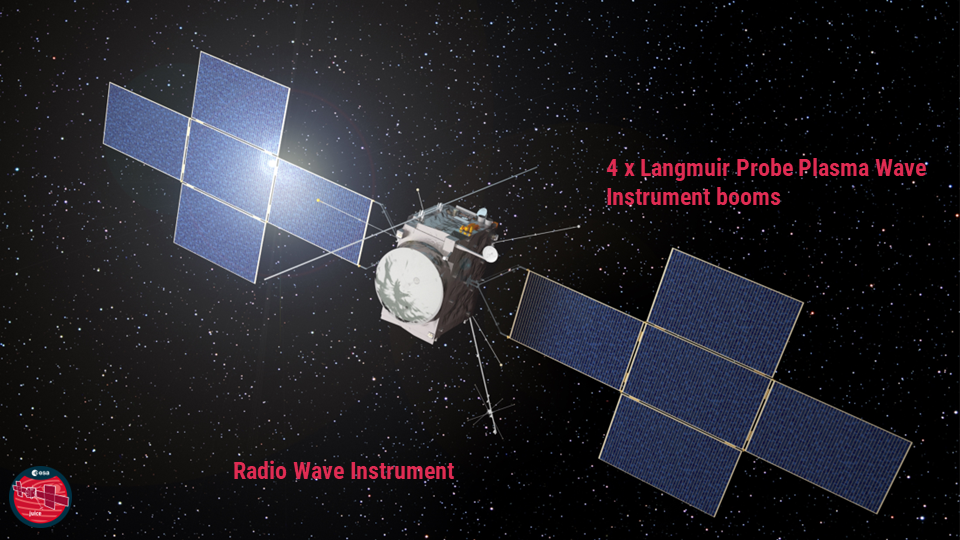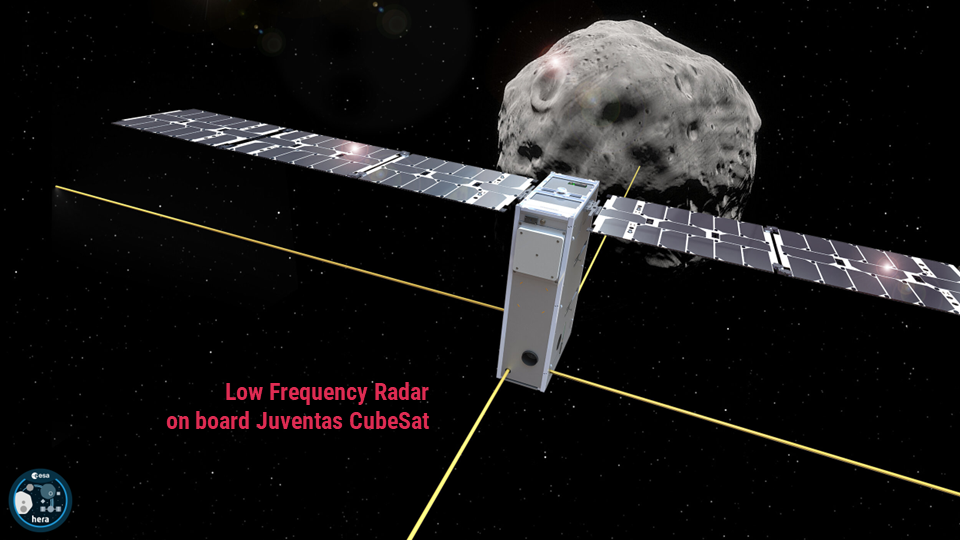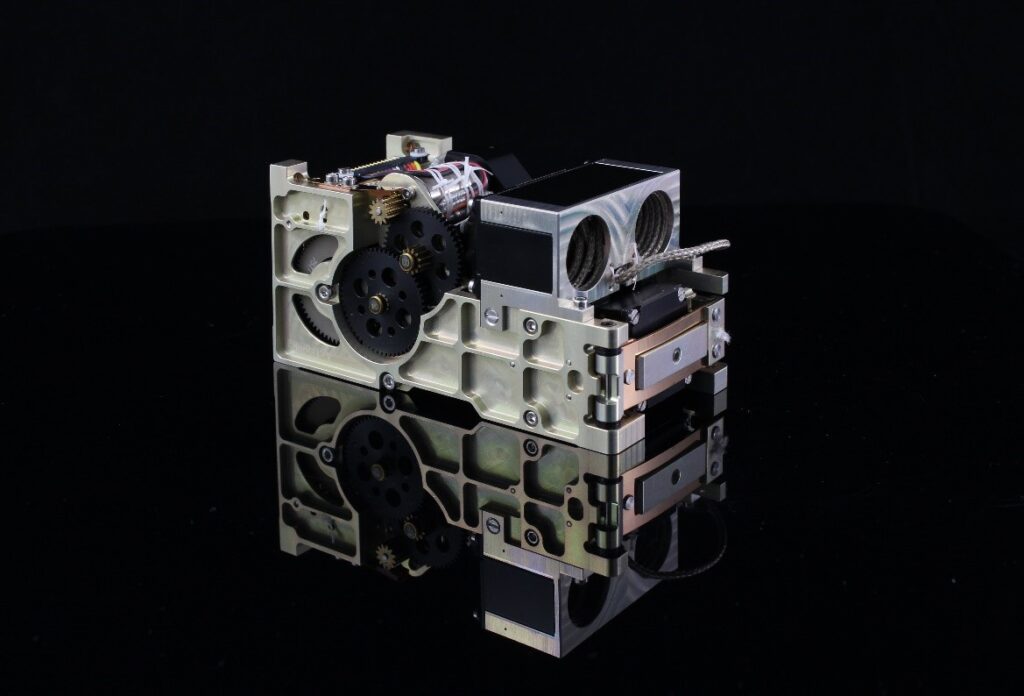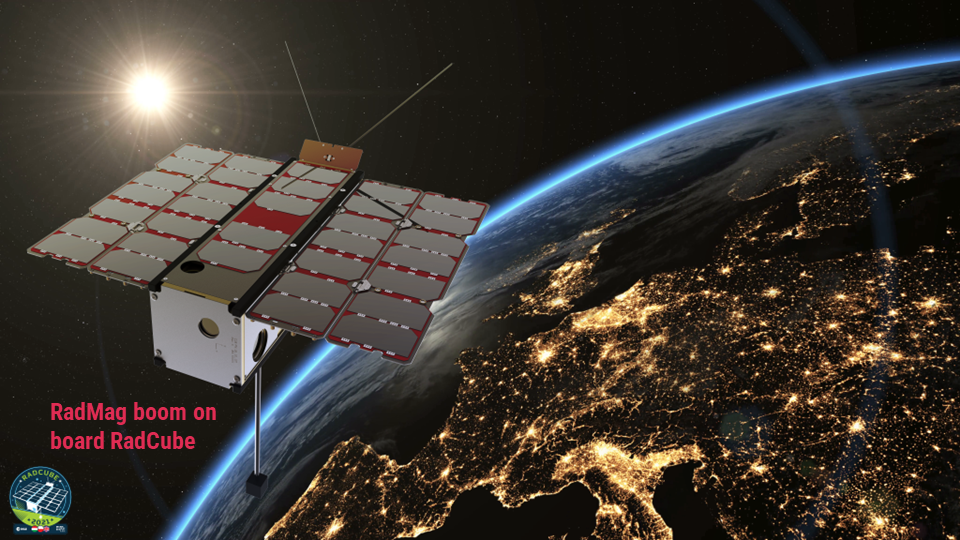

The RWI system makes use of three 2.5 m-long (tip-to-tip length), mutually perpendicular electric dipole antennas to measure three components of the high-frequency electric field ranging from 0.08 to 45 MHz.
The instrument was successfully delivered to the customer in 2020, and as of 2022, it is integrated with the spacecraft, awaiting launch to the Jupiter system. RWI will investigate the gas giant’s magnetosphere via electric field measurements in three axes, helping to uncover many mysteries surrounding Jupiter and its moons.
RWI Single Dipole Antenna parameters:
- Antenna type: dipole,
- Tubular boom used: Ø 10 mm beryllium bronze,
- Length: 2.5 m (tip-to-tip),
- Overall dimensions (stowed): 256 x 76 x 43 mm,
- Mass: 236 g,
- Power consumption: 8 W per 4 s (for lock & release mechanism), 1.25 W per 30 s (for electromagnet, when necessary),
- No additional driving units,
- Lack of deployment speed control,
- Non-explosive Lock & Release Mechanism based on a thermal cutting system (Vectran holding string)
- Single-shot device – once deployed, the antenna cannot be retracted
Juventas CubeSat will be ejected from the Hera spacecraft in deep space near 65803 Didymos, a binary asteroid system to investigate the ‘crime scene’ of NASA DART – the humankind’s first planetary defence mission. Antennas will be deployed to a yagi system for remote investigations, after which Juventas CubeSat is scheduled to land on the Didymoon. In order to facilitate proper landing as well as related scientific research, at least one of the antennas will be retracted.
The main challenges of the project are related to volume & mass restriction, which create significant constraints for a unit with a DC motor, gearbox & limit switches, at the same time maintaining a positive motorization margin in the worst-case conditions in deep space.




The boom system is a mechanism based on the tubular boom technology with the task to extend the outboard magnetometer away from the S/C main body. To be compliant with requirements for a very compact and light solution, tubular boom technology was used as the lightest possible design known to Astronika. Key features of the device are: long, 80 cm tubular boom of high positioning accuracy (both angular and linear) along with relatively high capacity cable container (up to 90 cm of 20 wires cable; designed and manufactured by Astronika as well), smooth deployment (speed of 5 cm/s), with the total mass of 150 g (excl. carried load), all in a small package of 92×45×46mm (including carried load). Non-explosive Lock & Release Mechanism features redundant solution using Dyneema wire cutters with a baseline peak power consumption of 4 W. Onboard optical encoder provides the possibility to control deployment speed and distance as well as provide the opportunity for step-by-step deployment.
The device is based on previous developments, but particular project requirements were so specific and demanding that it can be considered a new technology. Astronika carried out full development of the device from design, through manufacturing, integration, and extensive test campaigns until delivery of the flight hardware in February 2021.
The system was successfully demonstrated in orbit and became operational in November 2021, providing novel space weather measurements.

